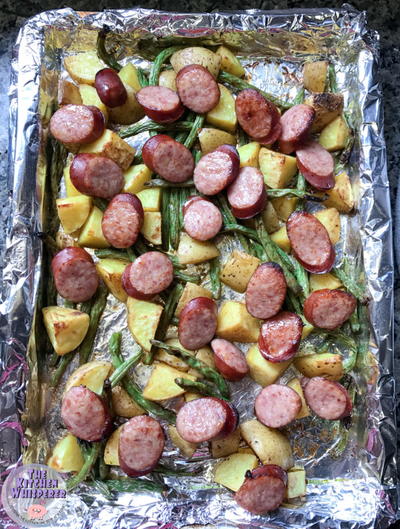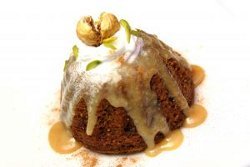Bigos
Ingredients
- 400g sauerkraut
- 400g white cabbage
- 200g pork
- 200g veal
- 150g good Polish sausage
- 150g smoked bacon
- 50g onion
- 5 grams dried mushrooms
- 50g tomato paste
- 1-2 cups red wine
- salt
- pepper
- sugar to taste
Instructions
Soak the dried mushrooms in warm water. Cut all the meats into cubes. Brown them. Brown the onions. Cut the white cabbage. Cover it with a small amount of water. Add the mushrooms (cut or uncut). Simmer until beginning to be tender. Put the meets, the onions, the sauerkraut, the boiled cabbage into one pot. Add the tomato paste. Cook together until ready (see below). On the subject of ingredients. Most of them are easily obtainable in the U.S. The main problem is with the mushrooms and the Polish sausage. Sometimes I simply give up and use ordinary mushrooms which I brown WELL together with the onions (almost to the point of evaporating all the liquid -- using salt helps). Sometimes, I use dried mushrooms that I can find, and most of the time I promise myself to bring more next time I go to Poland. Good Polish sausage is not available in the U.S. I do not know about Chicago stores, but the companies selling things they call "Polish sausage" should be ...(I better not say). I can't understand why they add the adjective at all. (Incidentally if you are ever in Poland, try what is called Polish sausage: "polska kielbasa" -- it is one of the best sausage kinds; you can not always find a good one, but if you do, I guarantee, it will change your conception of sausage forever.) So, my suggestion is: Just leave out the stuff that dares bear the name of polish sausage! Bigos is cooked in cycles. The "intensive" part of the cycle is cooking for 1/2-1 hour a day; and then -- since it is a winter dish -- it is put outside to "rest" (you can put it into your fridge if you live in Florida; it does not have to freeze). The same cycle is repeated day after day: the more you wait the better the bigos becomes. I have heard connoisseurs taking delight only in a month old bigos. But a week is good enough. There are a number of reasons for this cooking style. One is the pragmatic one, it provides a nice way of doing something with the hunt left-overs. The second is culinary one, long cooking allows the flavors to blend. And third is an aesthetic one, while you begin with a bland looking stuff you end with a product that is richly brown almost to the point of being black. Weekly bigos timetable Day 1. Brown the onions (if you are not using meat, add more). Add the partly cooked mushrooms (again add more for the vegetarian version) and sauerkraut. If you are not using white cabbage, add sugar at this point. Cook it until the fluids evaporate. Watch for bigos not to burn -- but don't be too careful. If it burns a little so much the better -- that's just the sugar caramelizing which adds to the overall taste of the dish (which has to get its delicious rich color from somewhere!). When it has burned a little add a little water and cook again. After 1-2 hours of cooking, let it cool and freeze. Day 2. Cook it again for 1/2 hour watching for the browning. Again, freeze. Day 3. As day 2, except you can begin adding wine instead of water. Days 4-6. As before. When you added all the wine, begin adding water again. At that point you might begin to correct its taste. It takes some experimenting. You have to balance the acidity (by adding sugar) and yet by no means let it be sweet or bland (by adding salt -- and remember that salt increases the acidity). Day 7. Bigos is ready. It is traditionally served on its own (if it is meat-rich) or with cooked Polish sausage, but you must skip that. The only necessary accompaniment is (plain) fresh rye-bread and red wine (I hear some males growling for vodka -- if you like it, you can try it too). Smacznego! [smuch-NEH-go] (-- 'Bon Appetit' in Polish)









